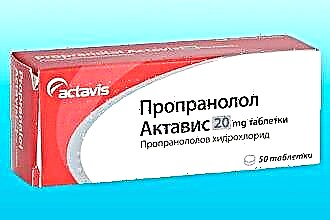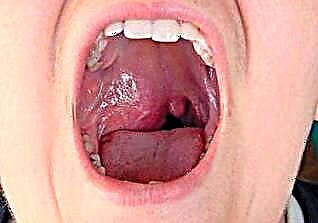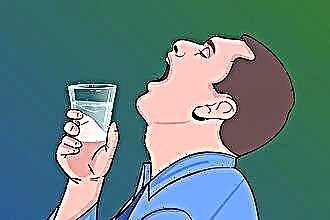People with hypertension are at risk of heart and vascular disease. Hypertensive crisis is one of the consequences of high blood pressure, it occurs in both adults and children. It is important to detect it in time in order to start treatment.
Typology
Knowing what a hypertensive crisis is, you can provide help in a timely manner, and in this way prevent the development of complications. This term is understood as a condition that manifests itself as a sharp jump in blood pressure, and, if untreated, leads to pathologies on the part of many organs of varying severity.

The types of hypertensive crises are divided according to the severity of symptoms and disorders that occur in the body. They are defined by a sharp increase in pressure associated with cardiac output and vascular resistance. In some cases, these factors overlap. Types of hypertensive crisis:
- Hypokinetic.
- Hyperkinetic.
- Eukinetic.
The hyperkinetic hypertensive crisis builds up very quickly against the background of good health. Harbingers for this form are not typical. Patients first feel a pronounced pain in the head, flies appear in front of their eyes. Nausea or vomiting is common. The crisis in patients is manifested by excitement, a feeling of heat, tremors occur throughout the body. The signs of a hypertensive crisis of an uncomplicated course include: increased sweating, rapid pulse, red spots on the skin. Hypertension is noted with an increase in systolic (up to 220 mm Hg) pressure, and diastolic pressure is usually slightly increased (no more than 50 mm Hg). Some patients note that hypertensive crises begin with an increase in the amount of urination.
When taking tests in the urine, most often there are no changes. In some cases, there is an increased number of red blood cells and protein. This form of hypertensive crisis lasts for several hours. A characteristic feature is its presence not only in people with a constant high level of pressure, but also against the background of certain conditions - stress, illness, taking certain medications. The occurrence of complications in the hyperkinetic type is rare.
There are other hypertensive crises, where the classification will include a hypokinetic variant of the course of the disease. It is characterized by a slow onset of symptoms. Patients report headache, drowsiness. Sometimes there is a feeling of nausea and vomiting in hypertensive crisis. Hearing and vision are temporarily impaired. The pulse usually does not change. Diastolic pressure increases to 150 mm. Art. After the signs of the crisis begin to disappear, protein, red blood cells and casts appear in the urine analysis.
The eukinetic type is another option in the diagnosis of hypertensive crisis. It proceeds in a completely different way when compared with the previous ones. Against the background of high blood pressure, there is a rapid increase in symptoms. The eukinetic type is characterized by headache, nausea, and movement disorders.
The most widespread classification is that includes only type 1 and type 2 crises. Scientists have identified specific features common to both options. The first type has the following specific features:
- trembling all over the body;
- headache;
- dizziness;
- high pressure (up to 200/110 mm Hg);
- shaking hands (tremors);
- rapid pulse;
- double vision and flashing before the eyes of flies;
- feeling hot;
- excessive sweating.
The second type is characterized by a gradual increase in symptoms. Diastolic pressure increases to 180 mm. Type 2 hypertensive crisis is more common in people with severe hypertension. Pain in the head arises sharply, vision and sensitivity are impaired. Some patients complain of constricting discomfort in the region of the heart. Palpitations and tremors during a crisis of the 2nd degree are not typical.
Child and adolescent crisis
Crises in adults and adolescents have some differences. Even in children, high blood pressure without treatment can cause serious problems that accompany them throughout their lives. Therefore, timely response to failures is so important.
Most often, a hypertensive crisis in children and adolescents occurs for the following reasons:
- Kidney disease.
- Head injury.
- Hormonal disbalance.
- Taking narcotic and other powerful drugs.
The development of a hypertensive crisis will be sharp or gradual. Children and adolescents complain of severe headache, nausea, agitation and fear. If this is an attack of a hyperkinetic type, then it lasts no more than 3 hours.
Signs of a hypokinetic course develop gradually. The most common complaints from the nervous system are a sudden change in mood, sleep disturbance.
Changes from the side of vision (flies before the eyes or fog) join. Such children and adolescents are distinguished by a decrease in physical and mental performance.
Hypertensive crises in adults have other features. For men, in some cases, the appearance of only weakness and a slight headache is characteristic. Women complain of a feeling of lack of air, increased anxiety, trembling in the limbs, palpitations, facial flushing, excessive sweating.
A hypertensive crisis, where the causes are associated with hormonal changes, is most often determined by the onset of menopause. The first symptoms in women are dizziness, nausea and, in some cases, vomiting. These unpleasant sensations are aggravated by turning the head, bending over, sneezing and coughing. In connection with a violation of the blood supply in the brain, some people note visual impairment and photophobia.
Complications
Hypertension most often becomes the cause of a hypertensive crisis, complicated by stroke, edema of the brain or lungs, retinal damage, heart attack, renal failure. The development of this state occurs gradually and takes 2-3 days. The first manifestations are drowsiness, ringing in the ears.
A hypertensive crisis (not complicated) poses less threat to human life, in contrast to a complicated course of the course. But it also requires immediate treatment, which is based on lowering blood pressure levels. There are several severe variants of the course of the disease:
- cerebral or cerebral;
- asthmatic;
- vascular (ischemic).
Cerebral hypertensive crisis, which is caused by pressure surges, can lead to encephalopathy, stroke, or transient impairment of blood circulation in the brain. The asthmatic variant is observed in almost 50% of patients. In some cases, it is complicated by myocardial infarction, heart rhythm disturbances. This form of the disease is characteristic not so much for young people as for the elderly, against the background of vascular atherosclerosis. Cerebral crisis is characterized by a predominance of cerebral symptoms. There are two types of cerebral crisis. The first one starts with a headache, and the pressure will be increased only in the arteries of the retina and temple. The second type can go away with severe seizures. Sometimes this state ends in loss of consciousness. An increase in the level of systemic pressure is characteristic. Hypertensive cerebral crisis in some patients occurs with impaired vision, motor function and sometimes seizures.
In a crisis with a predominant predominance of vascular changes (ischemic type), rhythm disturbance occurs in the body, and pains in the heart join. The development of severe hypertensive crises occurs gradually. The duration can take several days, but the hallmark of complicated variants is the persistence of symptoms even after the pressure has stabilized. Patients begin to notice that in the supine position they have shortness of breath, and half-sitting it becomes much easier for them. The skin looks dry and cold to the touch, and the face turns red.
Causes

There are a wide variety of reasons that affect pressure. Most often this turns out to be non-compliance with medical recommendations and incorrectly selected therapy. It is important to choose not only the drug, but also how long the patient will take it. There are the following factors that provoke the development of a hypertensive crisis:
- excessive physical activity;
- frequent influence of stressful situations;
- a sharp change in climatic conditions;
- eating food with a lot of salt;
- drinking alcoholic beverages;
- adrenal tumor (pheochromocytoma);
- kidney disease (glomerulonephritis, urolithiasis);
- menopause;
- atherosclerosis;
- diabetes.
There is a risk of complications of hypertensive crisis after surgery among patients with persistently high blood pressure.
This category includes people who have undergone surgery on the vessels, in the neck, head, after injury.

Differential diagnosis
High blood pressure is typical for many diseases. Differential diagnosis of hypertensive crisis plays a major role in the diagnosis. In such a situation, it is important to understand the problem in a timely manner, establish the severity and prescribe treatment in accordance with the patient's condition. Many do not think about the danger of a hypertensive crisis. In fact, many other diseases are hidden behind its symptoms, which are important to distinguish. Signs are similar to the following conditions:
- sclerotic arterial hypertension;
- sympathetic-adrenal vascular crises;
- polycythemia;
- primary aldosteronism;
- pheochromocytoma;
- thyrotoxicosis.
When the vessels are damaged by atherosclerosis, blood pressure, compared with a crisis, does not increase significantly. There is a pain in the head of a diffuse character. A characteristic feature of sympathetic-adrenal vascular crises is a feeling of fading in the region of the heart. Sometimes patients complain of angina-type pain, suffocation, frequent urination and defecation. Some note the appearance of a feeling of fear of death.
In patients with polycythemia, in addition to high blood pressure, erythrocytosis, thrombocytosis and an increase in hemoglobin levels are observed in the blood test.
Headaches, a feeling of fever, tinnitus, memory and attention disorders, stunning appear.
With primary aldosteronism, patients complain of weakness, frequent urination, and thirst. An imbalance of electrolytes in the body leads to muscle weakness and epileptic seizures. In addition, there is high blood pressure, heart palpitations. In connection with a decrease in the concentration of potassium, specific signs appear - this is the predominance of nocturnal urination, impaired renal function.
Patients with pheochromocytoma have high blood pressure, not lower than 180 mm Hg. The crisis develops suddenly, it begins with pallor of the skin, profuse sweating and trembling in the hands. The headache becomes throbbing, sometimes burning, pains in the abdomen and palpitations appear.
If the patient has thyrotoxicosis, then mainly the systolic pressure rises. Therefore, it facilitates the diagnosis of hypertensive crisis, where the diagnosis is based on the study of thyroid function. The most reliable is the determination of the level of thyroxine in the blood.
The most common symptom of crises is severe nausea and vomiting. In the brain, blood circulation becomes unstable, and how long this condition will last depends on the type of crisis. Violation of blood flow leads to the appearance of edema, which adversely affects the center of vomiting. The factors provoking this condition are physical overstrain, stress, changing weather conditions. The brain signals that it is necessary to get rid of excess fluid through vomiting in order to reduce the severity of the edema.
Prevention methods
A sharp increase in pressure entails many dangerous complications, so every patient should know what to do with a hypertensive crisis in order to maintain health. There are the following ways to deal with this condition:
- drug treatment;
- proper nutrition;
- dosed physical activity.
Hypertensive crisis of types 1 and 2 occurs more often in patients with a long history of the disease of hypertension. Therefore, they need to take antihypertensive drugs, which include:
 Beta-blockers ("Metoprolol", "Atenolol", "Propranolol"), the task of which is to reduce the heart rate.
Beta-blockers ("Metoprolol", "Atenolol", "Propranolol"), the task of which is to reduce the heart rate.- Calcium channel blockers (Nicardipine, Amlodipine) that dilate blood vessels.
- Diuretics ("Furosemide", "Veroshpiron") - they reduce pressure by removing fluid, thereby preventing the appearance of vomiting.
- ACE inhibitors (Captopril, Enalapril) do not allow vessels to expand under the influence of the hormone angiotensin.
- Antispasmodics ("No-shpa") expand the lumen of blood vessels.
Pressure surges are associated with constant stress, because adrenaline, which is released at this moment, constricts blood vessels. Therefore, it is necessary to know how to avoid a hypertensive crisis in such a situation. For prevention, sedatives are used. It is best to use herbal preparations - motherwort, valerian. Yoga is an effective way to relax and avoid stress. To master this technique correctly, training with the establishment of the correct posture and breathing is important.
People prone to high blood pressure need special nutrition for hypertensive crisis. It should be remembered that the maximum amount of salt that is allowed to be consumed during the day is 3 g. You cannot eat foods rich in it in content - sausages, canned food, pickles, cheese. The diet should include a sufficient amount of potassium. Many vegetables and fruits are rich in them.
The number of meals per day should be 5, you need to eat in small portions. Drink as much as the body requires, but not less than 1.5 liters. It is recommended for patients with such a problem to reduce their daily sugar intake. This is necessary to prevent complications. During the day, a blood glucose test is required. It is considered an important stage in the use of foods rich in fiber in your diet - these are fruits, vegetables, whole grain porridge.
Fermented milk products help to reduce the high level of pressure. A diet for hypertensive crisis excludes the use of coffee drinks and tea. Chicory or herbal teas are recommended instead.
A hypertensive crisis is considered an insidious and formidable complication for patients with hypertension. Some people do not feel high blood pressure, making diagnosis and treatment difficult. To prevent the emergence of a crisis and its consequences, it is extremely important to observe preventive measures.

 Beta-blockers ("Metoprolol", "Atenolol", "Propranolol"), the task of which is to reduce the heart rate.
Beta-blockers ("Metoprolol", "Atenolol", "Propranolol"), the task of which is to reduce the heart rate.

